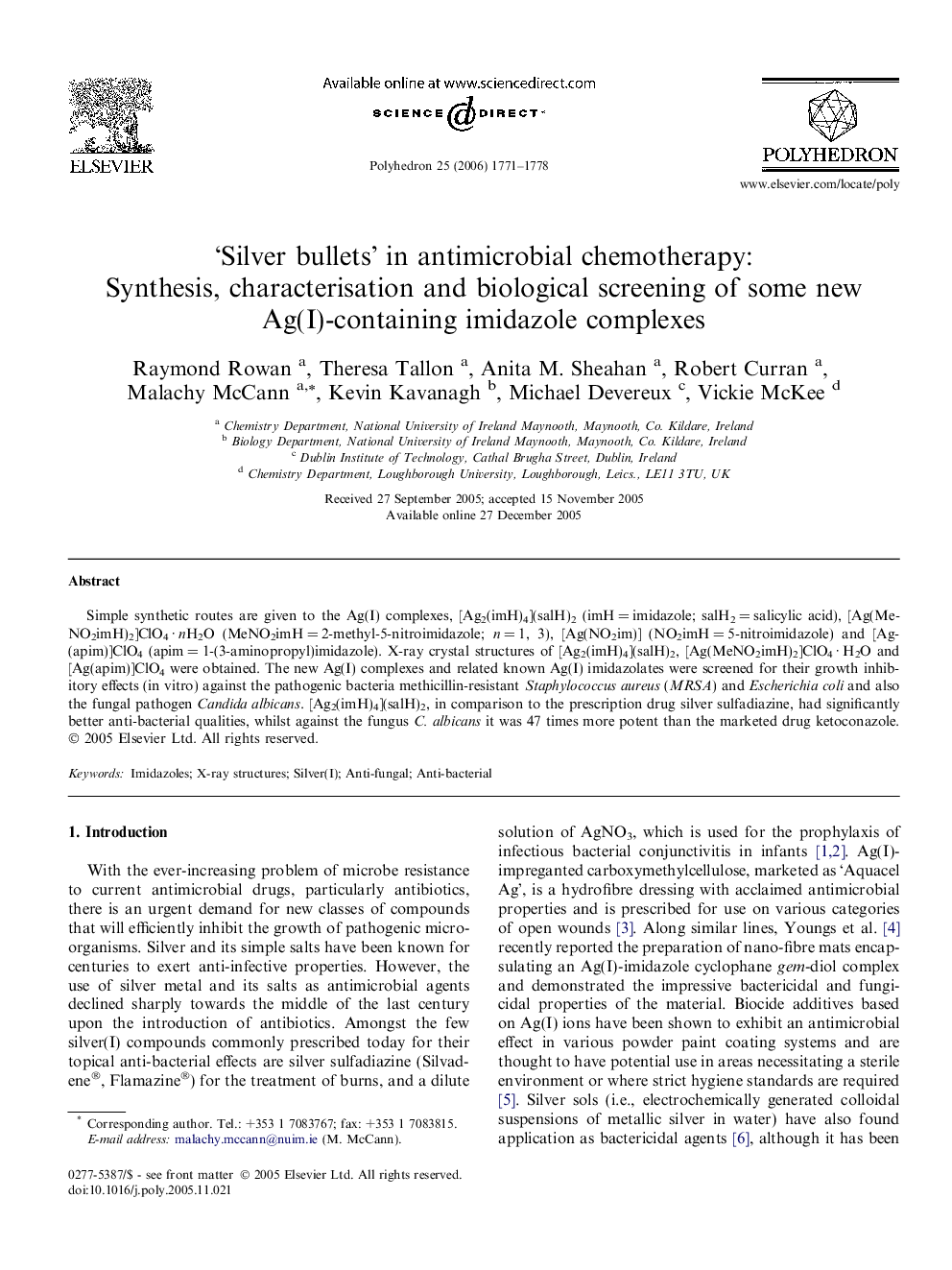| Article ID | Journal | Published Year | Pages | File Type |
|---|---|---|---|---|
| 1339202 | Polyhedron | 2006 | 8 Pages |
Simple synthetic routes are given to the Ag(I) complexes, [Ag2(imH)4](salH)2 (imH = imidazole; salH2 = salicylic acid), [Ag(MeNO2imH)2]ClO4 · nH2O (MeNO2imH = 2-methyl-5-nitroimidazole; n = 1, 3), [Ag(NO2im)] (NO2imH = 5-nitroimidazole) and [Ag(apim)]ClO4 (apim = 1-(3-aminopropyl)imidazole). X-ray crystal structures of [Ag2(imH)4](salH)2, [Ag(MeNO2imH)2]ClO4 · H2O and [Ag(apim)]ClO4 were obtained. The new Ag(I) complexes and related known Ag(I) imidazolates were screened for their growth inhibitory effects (in vitro) against the pathogenic bacteria methicillin-resistant Staphylococcus aureus (MRSA) and Escherichia coli and also the fungal pathogen Candida albicans. [Ag2(imH)4](salH)2, in comparison to the prescription drug silver sulfadiazine, had significantly better anti-bacterial qualities, whilst against the fungus C. albicans it was 47 times more potent than the marketed drug ketoconazole.
Graphical abstractSeveral Ag(I) complexes containing imidazole and derivatised imidazole ligands were synthesised and [Ag2(imH)4](salH)2 (imH = imidazole; salH2 = salicylic acid), [Ag(MeNO2imH)2]ClO4 · H2O (MeNO2imH = 2-methyl-5-nitroimidazole) and [Ag(apim)]ClO4 (apim = 1-(3-aminopropyl)imidazole) were structurally characterised. In vitro tests against pathogenic bacteria and fungi revealed that the complexes possessed significant antimicrobial activity.Figure optionsDownload full-size imageDownload as PowerPoint slide
